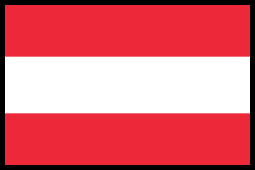Send Gifts In Europe / Germany / Gift Baskets to Hamburg

Send Gift Baskets to Hamburg, Germany
Are you looking for the best and perfect gift baskets to Hamburg, Germany for your loved one? If yes, you reached the right place.
Hamburg, a major port city in northern Germany, is connected to the North Sea by the Elbe River.
The population of Hamburg: 1.81 million
The standard delivery method to Hamburg: 2 – 3 working days*
The express delivery method to Hamburg: 1 – 2 working days*
*Saturday and Sunday are not included as working days
Use Our Advice
We are here always at your service.
No Minimum Order
Each customer is important to us.
Shipping Information
We deliver all over Europe.
Discover Our Gift Baskets For Every Occasion
Holiday Gifts
Hamburg Overview
Hamburg is a major port city in northern Germany. It’s connected to the North Sea via several canals, and also contains large amounts of parkland near its core. Inner Alster lake is dotted with boats near its center and surrounded by charming architecture. The central Jungfernstieg boulevard connects the Neustadt (new town) with the Altstadt (old town), where it’s home to landmarks like 18th-century St. Michael’s Church.
Geography
Hamburg is a coastal city located on the southern side of Jutland in Germany. It’s between Continental Europe and Scandinavia, with the North Sea and the Baltic Sea nearby. The city of Hamburg is located on the River Elbe at its confluence with the Alster and Bille. The city center is around the Inner Alster and Outer Alster, both formed by dams on the River Alster. Hamburg, often considered a metropolis, is also part of the location of various islands. The three islands of Neuwerk, Scharhörn, and Nigehörn are in the Hamburg Wadden Sea National Park and can be reached via Hamburg’s port.
These neighborhoods of Neuenfelde, Cranz, Francop, and Finkenwerder are in the Altes Land region, a geographical area that has a lot of unique features worth exploring. This would make for an interesting day trip or weekend adventure! Neugraben-Fischbek has Hamburg’s highest elevation and is adjacent to the state of Schleswig-Holstein. Hamburg borders the states of Schleswig-Holstein and Lower Saxony.
Climate
Hamburg has a temperate oceanic climate (Köppen: Cfb) and is influenced by its proximity to the coast and maritime influences that originate over the Atlantic Ocean. The location in the far northwest of Germany has more climate extremes than normal, but the weather is still mild for a marine climate. The nearby rivers and lakes have a maritime temperate climate. Every winter, there’s snow that falls on the area here and it varies from year to year. In recent years, winter has been less cold and snowfall has become more common. This is happening because the climate keeps changing.
The warmest months are June, July, and August. The coldest would be December, January, and February.
Etymology
When the area was first designated as a town in 1275, it later became known by the name Hamburg. The word Hamburg comes from the castle, which was built around AD 808. The city of Hamburg, Germany is often referred to as the “gateway to Northern Europe” due to its location along the Baltic Sea. It was established after a settlement was established on a sandbank that rose on rocky terrain in a marsh between the River Alster and the River Elbe.
History
In 834, the city of Hamburg was made the seat of the Roman Catholic Bishopric. Ansgar became known as “the Apostle of North Germany” and he even had a new cathedral built in his honor. Hamburg was later united with Bremen in 840 to form the Bishopric of Hamburg-Bremen.
Hamburg had a troubled historical past but was also a vibrant city. In 845, 600 Viking ships sailed up the River Elbe and destroyed Hamburg, at that time a town of around 500 inhabitants. In 1030, King Mieszko II Lambert of Poland burned down the city. The Black Death swept through Hamburg in 1350, killing at least 60% of the population. The city also experienced several great fires later in the medieval period, including one in 1201. Valdemar II of Denmark raided Hamburg in 1214.
In 1189, by imperial charter, Frederick I “Barbarossa” granted Hamburg the status of a Free Imperial City and tax-free access (or free-trade zone) up the Lower Elbe into the North Sea. In 1265, an allegedly forged letter was presented to or by the Realm to raid Holstein. This charter, as well as, Hamburg’s proximity to the main trade routes of the North Sea and Baltic Sea made it a major port in Northern Europe early on. It also marked the origin and core of the powerful Hanseatic League through its trade alliance with Lübeck in 1241. On November 8, 1266, a contract between Henry III and Hamburg’s traders allowed them to establish their trade guild in London for the first time. Called “the hanse” because of their shared German ancestry with the Hanseatic League, this was the first time that this word was used for business in history. In 1270, Jordan von Boitzenburg, the senator from Hamburg, wrote the first description of civil, criminal, and procedural law for a city in Germany. His work was entitled “Ordeal Book” (German: Ordeel). On 10 August 1410, civil unrest forced a compromise (German: Rezeff). This is considered the first constitution of Hamburg.
Demographics
On December 31, 2016, 1.86 million people were living in the town of Hamburg. The population density is 2/km2 (6/sq mi). The metropolitan area of the Hamburg region is hours ahead of us on December 31st, 2016.
There were 915,319 women and 945,440 men in Hamburg. The ratio between males and females was 1:1,033. In 2015, there were 19,768 births in Hamburg (of which 38.3% were unmarried women), 6422 marriages and 3190 divorces, and 17,565 deaths. In the city of Hamburg, the population was spread out. They had 16.1% under the age of 18 and 18.3% who were 65 years old or older. 356 people over 100 years old lived in Hamburg.
The majority of people in Hamburg have some immigrant background, with 34% of the population coming from another country. People from almost 200 countries gained German citizenship in 2016.
In 2016, there were 1,021,666 households. 17.8% of those households had children under the age of 18; 54.4% were made up of singles. 25.6% were single-parent households and the average household size was 1.8.
Language
Hamburg is known for being a regional variety of Standard German, but there is another language that is popular in the city: Hamburger Platt or Low German. Low German-colored dialects exist in Germany because of standardization efforts in the 18th century. These dialects have different structures, vocabulary, and phonology compared to Standard German. Originally, there were different dialects of German. One major note is the low-level working class dialect and then better-known prestigious type called Hanseatendeutsch in Germany. It is used, however, mainly in appreciation. Nowadays people recognize Standard German as being in a very prominent position, especially in education and media. This is due to its influence remaining strong through the centuries. Low German is indicated by songs like the famous Hamborger Veermaster; it used to be important but now has decreased from its former state of importance. Low Saxon is a dialect of Old Low Franconian, which evolved into Dutch and Frisian. Before all the dialects developed in modern Dutch and, to some extent, in West Frisian, it was spoken all over the northern Low Countries. Its grammar has been declining since the Middle Age.
Religion
65.2% of people who are not religious or adherent to other religions than the Evangelical Church or Catholicism.
Twenty-Four percent of the population belonged to the North Elbian Evangelical Lutheran Church and nine point nine percent of the population to the Roman Catholic Church in 2018. Hamburg is the seat of the Evangelical Lutheran Church in Northern Germany and the Roman Catholic Archdiocese of Hamburg. According to a publication from Germany’s Muslim life (in which nearly half a million people live) in 2008, 142,180 Muslims lived in Hamburg. Now, approximately three years later (May 2011) of working with census data for 21 different countries came up with the number of 143,200 people in Hamburg, who are mostly Muslim. They make up 8.4% of their total population count. As of 2021, there were more than 50 mosques in the city. The Ahmadiyya-run Fazle Omar Mosque was one of the earliest ones, and it hosted an L-shaped open area to gather people. A Jewish community exists.
Government
Hamburg is one of 16 German states and this means the Mayor of Hamburg has more responsibilities than a typical city mayor would. Germany is a European nation that also oversees education, correctional institutions, and public safety as well as libraries, recreational facilities, sanitation, and water supply.
The Hamburg Rathaus has been the seat of the government of Hamburg since 1897 and is where the offices of the mayor, meeting room for the Senate, and floor for Parliament are located. Willy Brandt occupied the office of Hamburg’s mayor from 1951 until he died in 1984. He was succeeded by incumbent Ole von Beust, who governed with the CDU and GAL, Hamburg’s regional wing of the Alliance 90, from 2001-2010. A brief period later, Christoph Ahlhaus took charge. But the coalition fell apart a year later and Scholz became mayor of Hamburg after the election that occurred a few months afterward as he led his party to victory.
Parks and gardens
Hamburg’s most famous attraction is the Planten un Blomen park. It is a lush and historic site that has since been renovated to give visitors a modern experience. Within the gardens of the park, there are various gardens with different themes. The biggest Japanese garden in Germany is one, as well as Alter Botanischer Garten Hamburg, a botanical garden that now houses hibernating plants indoors.
Hamburg is quite a popular place and it’s not hard to find people to spend your time with. The city features many gorgeous landscaped parks that are perfect for walking, running, or just sitting in the sun. There’s a huge annual festival that happens in the Metropolitan Park in the summertime. It features a lot of places to enjoy all kinds of music and festivities. Some events that take place include art, theater, fashion shows, and fun activities for children.
Culture and contemporary life
Hamburg has more than 40 theatres, 60 museums, and 100 music venues and clubs. With over 6,600 music venues in Hamburg, Germany’s second-biggest city offers a great variety of culture as well as entertainment options. In 2005, 18 million people visited concerts, exhibitions, theatres, cinemas, museums, and cultural events. It’s estimated that 8551 companies (average size of 3.16 employees) were involved in the culture sector with music being a big part of their work. To propel the city of Hamburg into this prestigious area, the creative industries in Hamburg are rapidly growing. They represent about 20% of all companies within the state and were awarded European Green Capital in 2011.
Cuisine
Original Hamburg dishes are Green beans cooked with pears and bacon, known as Aalsuppe, which is translated to mean “eel soup.” eel is often used to fill a big restaurant menu as they tend not to have a lot on offer when it comes to meat. Often people are unaware of this until they order this dish and it arrives, leaving them feeling disappointed because they had asked for meat but received no meat instead. There is Bratkartoffeln (pan-fried potato slices), Finkenwerder Scholle (Low Saxon Finkwarder Scholl, pan-fried plaice), Pannfisch (pan-fried fish with mustard sauce), Rote Grütze (Low Saxon Rode Grütt, related to Danish rødgrød, a type of summer pudding made mostly from berries and usually served with cream, like Danish rødgrød med fløde) and Labskaus (a mixture of corned beef, mashed potatoes, and beetroot, a cousin of the Norwegian lapskaus and Liverpool’s lobscouse, all offshoots off an old-time one-pot meal that used to be the main component of the common sailor’s humdrum diet on the high seas).
The local vernacular term for a type of shandy is Alsterwasser. It consists of equal parts of beer and lemonade topped with soda.
“Franzbrötchen” is a pastry that has been especially popular in Bavaria. They are flattened cream-filled croissants with cinnamon and sugar filling, often including raisins or brown sugar streusel. The name may also reflect the roll’s croissant-like appearance – which would make a Franzbrötchen a “French roll”. Many people might know of the local word “Schrippe” which refers to the German bread, scored lengthways. A typical type of bread in Germany would be Brötchen or a round piece. Hamburg and Denmark have a lot in common and include a predilection for open-faced sandwiches, especially topped with cold-smoked or pickled fish.
The American hamburger may have evolved from Hamburg’s crispy Frikadeller meatballs. Their tough crust and firm texture make these ground beef balls a perfect match for a sloppy bun. An American burger is made from ground beef, bread, egg, and seasonings and is usually served with potatoes. A hamburger steak, or a burger as it is now affectionately known all over the English-speaking world, has a long history. The term “hamburger” has since been applied to pieces of meat cooked in this way.
Economy
The GDP of Hamburg in 2018 was around 119 billion EUR. In terms of GDP per capita adjusted for purchasing power, Hamburg had a much higher GDP than the EU average of 192%. The city’s economy is growing, with the GDP per employee at 132% of the European average. It also has a relatively high employment rate and a lot of businesses, 160,000 in total. The most recent data shows that the income of employees was 49,332 euros.
Germany’s unemployment rate fell below 6% in October 2018 thanks to a recent labor law that made it easier for employees to be laid off.
Tourism
In 2017, 6.7 million tourists visited Barcelona with 13.8 million overnight stays. The tourism industry alone employs 175,000 people full-time and brings in a revenue of €9 billion annually, making the tourism sector a major economic force in the city. Hamburg is the City of Visitors, and its growing tourism industry continues to grow quickly. The city offers some of the best attractions in all of Germany, leading travelers throughout Europe to spend many days and nights here.
You should check out the old warehouse district because it used to be such a great place to work. You can visit the city hall and see the grand church St. Michaelis, and go down to the harbor promenade or better yet – take a sightseeing bus that connects these places! As Hamburg is one of the world’s largest hubs for trade, it is often visited by land and water tourists. They start from Landungsbrücken, which is also a walkable distance from museums like the Maritime Museum or Ausstellungshalle Altes Landesmuseum.
Reeperbahn, Europe’s largest red light district and home of strip clubs, brothels, bars & nightclubs is also located in the quarter of St. Pauli in Hamburg. Hans Albers is with many people for the fact that he wrote a song (“Auf der Reeperbahn Nachts um Halb Eins”) in one of the most well-known neighborhoods in Hamburg. He was also an actor and did considerable work with the Beatles, who lived in Hamburg during their formative years. If you want to enjoy a laid-back day in Hamburg, you can head over to the Schanze neighborhood. You’ll find lots of street cafés, and there are also plenty of things to do near the river Elbe. The Tierpark Hagenbeck is one of Hamburg’s popular attractions, with an interesting history and some of the best views in town.
Hamburg’s visitor average in 2016 was two nights. The majority of visitors come from Europe, especially about 11.4% from Germany, 8.7% from the United Kingdom, 3% from Denmark, and 12% from Switzerland. The United States is the largest source from outside Europe and 206,614 overnight stays were recorded in 2015.
The Queen Mary 2 has docked regularly since 2004. There were six departures planned from 2010 onwards.
Health systems
Hamburg has 54 hospitals. The University Medical Center Hamburg-Eppendorf, with about 1,736 beds, is the largest hospital in Hamburg. There are a lot of smaller healthcare facilities in the city, which is good news for its residents. In 2011, just by looking at the numbers, there were about 12,507 hospital beds and 5,663 physicians in private practice. 456 pharmacies were available as well.
Transport
Hamburg is a major transportation hub, with direct access to four motorways, and offers a route to Scandinavia that is not available from any other city in Germany!
Bridges and tunnels connect the north and south of the city, such as the old Elbe Tunnel or St. Pauli Elbtunnel which opened in 1911, and now is a major tourist sight and the Elbe Tunnel crosses.
Hamburg is one of the oldest airports still in operation and was also the first airport in Germany. It offers both international and domestic flights, as well as flights for smaller airplanes. One company has even created a so-called “company airport” inside Hamburg with its runway and terminal, recognizing Lübeck Airport.
Hamburg’s license plate had the letter “H” for many years before 1956. In 2006 when Germany changed their system of license plates, Hamburg’s car plates now use a double letter to represent the city name. The “H” prefix was used by Hamburg between 1945-1947, but after the war, they were officially renamed, Hanover. As of 1956, the “H” prefix was defunct.
Public transport
Public transport in Hamburg is organized by the Hamburger Verkehrsverbund. The HVV has always been one of the first large-scale bus, train, and boat rail organizations, and allows passengers to travel with ease through all Hamburg companies’ services.
Education
The school system is managed by the Ministry of Schools and Vocational Training. There are over 221,000 students in 251 primary and secondary schools across Germany. This allows the country to catch up with other countries that have larger populations than Germany.
About 100,589 students are enrolled at 19 important universities in Hamburg. Six universities are public, including the largest, the University of Hamburg (Universität Hamburg) with the University Medical Center Hamburg-Eppendorf, the University of Music and Theatre, the Hamburg University of Applied Sciences, the HafenCity University Hamburg, and the Hamburg University of Technology. Seven private universities are found in Germany. The city has also smaller private colleges and universities, including many religious and special-purpose institutions, such as the Helmut Schmidt University (formerly the University of the Federal Armed Forces Hamburg). Hamburg is home to one of the oldest international schools in Germany, the International School of Hamburg.
What is Hamburg Germany known for?
Hamburg is also known for its large harbor area and excellent transportation hub. It’s a major tourist destination and a centers of culture, as well. A lot of people are living in Hamburg but don’t realize that it has so much to offer.
Is Hamburg Germany nice?
Hamburg is a great place to visit and has amazing parks, nature, and plenty of canals, lakes, and rivers on the outskirts of the center of life. They have a lake called ‘Alster’ in the heart of it where you can hang out for romantic walks or with ice cream.
Is Hamburg Germany worth visiting?
It is Germany’s top cultural destination. The city has even more to offer than first meets the eye. More than 50 museums, over 45 theatres, and around 100 music venues & clubs! With live events and stellar musical performances each night, Hamburg is a world-class musical city in comparison to New York or London. When it comes to music and art, Berlin will not be outshone by Hamburg.
Is Hamburg good for a living?
Mercer proves that Hamburg is one of the best cities in Europe for quality of life and more specifically, it ranked in the top 20. Perhaps there’s a good reason for that: Hamburg has a strong connection to British ex-pat communities, which makes sense considering it was occupied by UK forces at the end of the Second World War.
19 Top-Rated Attractions & Things to Do in Hamburg
Take the Pedestrian Trail to the Port of Hamburg & Speicherstadt
The Port of Hamburg is a remarkable 100 square kilometer tidal harbor, with landmarks like the Hamburger Hafen and the famous Hamburg skyline. In popular culture, it’s often called “HafenCity”. You’ll find some of the city’s most-visited tourist attractions in this area. It is full of all types of people on summer evenings and weekends.
Miniatur Wunderland
Even though the Miniatur Wunderland is billed as the world’s largest model railway, it’s much more than simply a toy train layout. Hamburg, Germany was subaquatic below, and so they had to build underwater tunnels all across the city to make it a reality. This is one of the best places to visit in the city’s historic Speicherstadt warehouse district. It’s the world’s largest model railway, boasting more than 15,400 meters of track and 1,040 trains (so expect to spend plenty of time here).
See a Concert at Elbphilharmonie
The Elphi is a well-known landmark in the revitalized Port of Hamburg. It’s what many in the city call the “crown jewel.” This new building on the Grasbrook peninsula is one of the largest and most acoustically pleasing concert venues in the world.
Get Your Art Fix at Hamburger Kunsthalle
Hamburg is home to Hamburger Kunsthalle, a top art hall in Germany. The HKB features three separate but connected buildings which are worth a look if you’re visiting the area. Highlights include the local artists of the Northern Renaissance and Dutch painters from the 16th and 17th centuries.
Visit the Hamburger Rathaus (City Hall) and Mönckebergstraße
Hamburg’s City Hall, or Rathaus, is the central point of the city. Engraved at the entrance are literal messages of what to expect once you enter: ‘Habt euch uns inne’ says one, which means ‘Welcome to us.’ This Neo-Rennaissance 5-star hotel has been around since 1897. It’s known as the “5 Star Grand Hotel” and only contains 647 rooms, but it can be rented out for a tour during Long Night of Museums.
St. Michael’s Church
St. Michael’s Church was the most famous of Hamburg’s Baroque churches, built between 1750 and 1762. It is one of the city’s most important landmarks.
Board the Historic Tallships: Rickmer Rickmers and Cap San Diego
Located in the River Rhine, Rickmer Rickmers is a three-masted tall ship with a colorful history. Built in 1896, the ship has taken a lot of time to restore and even has a restaurant on board. For anyone interested in the 19th century, this is an experience you won’t want to miss.
Explore Ships of the Past at the International Maritime Museum
This museum is a great place to explore Hamburg’s maritime history or even see new ships docked.
Explore the Alster Lakes
Hamburg’s city center is a focal point of the city, so much so that the city has two artificial lakes connected to the Elbe and Alster rivers. A place to explore some of Hamburg’s most picturesque city squares and historic avenues, as well as its famous pedestrian areas, the passagens. The best routes in Hamburg take you to the elegant Jungfernstieg with its cafés and landing stages used by tour boats, and the Ballindamm, with the city’s largest shopping center.
Museum of Art and Design
Hamburg’s Museum of Art and Design (Museum für Kunst und Gewerbe Hamburg, or locally as “MKG”) ranks alongside the Bavarian National Museum in Munich as one of Europe’s most comprehensive displays of German art and design.
See One of the World’s Largest Burial Grounds: Ohlsdorf Cemetery
Ohlsdorf Cemetery is indeed the largest cemetery in Europe and one of the most important. This cemetery, which covers 961 acres, offers 12 chapels and 1.5 million burial sites.
Take a Walk in a Park: Planten un Blomen and Wallringpark
The St. Pauli landing stages in Hamburg are an important leisure area where you can relax and enjoy the city like most of the residents in Hamburg do. They include the Kleine and Grosse Wallanlagen, some of their most popular open spaces that lead up to the Old Botanic Garden, which is right at the entrance, making it easy for visitors to explore.
Hear the Historic Organ at St. James’ Church
St. James’s Church is just a few minutes east-south-east of the German city of Hamburg, and it’s a beautiful location to take in the architecture. In 1255, a church has existed on this site and it is still one of the most important religious sites in the city. Its presence outside the city walls was at first inconvenient but now it is considered part of the urban tourism market for locals and tourists.
Museum am Rothenbaum & PROTOTYP Museum
MARKK is a museum in Hamburg that was founded in 1879 and is one of the largest such museums in Europe.
Altona & The Altonaer Museum
Hamburg is home to many interesting Neoclassical houses, which are some of the most beautiful in Europe. Althea is a district that’s popular among sightseers due to its many attractive houses with old-fashioned architecture and well-preserved cultural sites.
See the Old Ships at Museumshafen Oevelgonne (Museum Harbor)
Hamburg’s Oevelgonne district contains the New Elbe Tunnel, a 3.5-kilometer long tunnel running under the river Elbe. Here, you’ll find the Museum Harbor which houses about 20 historic vessels dating from 1880 to 1960. These are all carefully restored by a private organization and can be a fun attraction.
Jenisch House
You can find a beautiful 110-acre Jenischpark just not far from the New Elbe Tunnel, in the Klein Flottbek district of Hamburg. This is one of the city’s largest and most attractive spaces.
Visit the Zoo: Tierpark Hagenbeck
This zoo is tucked away in Hamburg’s northwestern suburb of Stellingen, Tierpark Hagenbeck. The zoo was established in 1907 to house a collection of exotic animals owned by a local fishmonger-turned-exotic animal trader Carl Hagenbeck.
Drive to Schloss Ahrensburg
Today, the Castle of Allianz is a museum that preserves and exhibits many of the rooms that were originally populated during the 18th century. Some of them even have their original furnishing still intact. Beautiful background music adds to the atmosphere and gives visitors a fantastic experience.
Send Gift Baskets To Hamburg
Sending gifts to Hamburg is easy with Walwater Gifts in Hamburg. Walwater Gifts offer a variety of gifts for delivery in Hamburg. No matter who you are buying for or what the occasion – Christmas Gifts to Hamburg, Birthday Gifts to Hamburg, Wedding Gifts to Hamburg, New Baby Gifts to Hamburg, Anniversary Gifts to Hamburg, or Sympathy Gifts to Hamburg, we have the perfect gift.
Walwater Gifts Holiday Gifts in Hamburg
As we know, People in Hamburg celebrate many different holidays that Walwater have a gift solution for each of them. We can deliver Christmas Gifts to Hamburg, Valentine’s Day Gifts to Hamburg, Mother’s Day Gifts to Hamburg, Father’s Day Gifts to Hamburg, Birthday Gifts to Hamburg, Easter Gifts to Hamburg, Holidays in Hamburg, Corporate Gifts to Hamburg, Business Gifts to Hamburg, Online store in Hamburg, etc.
Walwater Gifts is offering Express gifts delivery Gifts to Berlin, Gifts to Bielefeld, Gifts to Bonn, Gifts to Bremen, Gifts to Chemnitz, Gifts to Cologne (Köln), Gifts to Darmstadt, Gifts to Dortmund, Gifts to Duisburg, Gifts to Düsseldorf, Gifts to Frankfurt or anywhere else in Germany.
Delivery information for Hamburg
Standard duration (without weekends and public holidays):
*4-5 business days (Monday – Friday).
Express duration (without weekends and public holidays):
*1-2 business days (Monday – Friday).
Gift Orders received by 12 am (+1 GMT) Walwater Gifts utilize several different shipping methods, always trying to find the best solution for you. Ground shipping 4-5 business days.
Please note that parcels in Hamburg will not be delivered on Saturdays, Sundays, or Holidays.
Walwater Gifts Shipping information
When you provide us with complete and accurate delivery information, your gifts will be delivered promptly and you will be spared re-delivery charges. Please check your delivery address carefully. Incorrect or incomplete addresses will result in a € 20,00 handling charge in addition to all charges accrued for re-shipping each item. We cannot ship to P.O. Boxes.
Gifts to Hospitals or Hotels
Please confirm the recipient is still in the hospital/hotel before scheduling the delivery. When placing a gift basket order for delivery to a patient/guest please make sure that you include as much information about the patient’s/guest’s location as possible. Such as patient/guest’s name, Hospital, Department (i.e., Maternity), and Room No. and the Hospital’s complete address.
Shipping restrictions:
Based on the reason that we are sending our gift baskets to Hamburg from our European office, there are no Shipping Restrictions. Therefore this all includes Walwater Gifts which contain alcohol brand gifts to Hamburg.
Cities we deliver to Germany
Walwater Gifts deliver all over Germany. See more. At Walwater Gifts to Hamburg, we have extensive experience in sending gift parcels all over the world. However, each country has unique Customs Regulations and delivery times. Please feel free to contact us if you have any questions or need assistance placing your order online.
Delivery of our Gift Baskets to Europe
We deliver our gifts & gift baskets everywhere from small towns to major cities to 25 European Countries. Walwater Gifts delivers gift baskets to Austria, Belgium, Bulgaria, Croatia, Czech Republic, Denmark, Estonia, Finland, France, Germany, Greece, Hungary, Ireland, Italy, Latvia, Lithuania, Luxembourg, the Netherlands, Poland, Portugal, Romania, Slovakia, Slovenia, Spain, Sweden.
10 Excellent Reason For Send Gifts In Europe
- We are a European provider with delivery to 25 European countries
We ship our gifts to European Union countries, such as Austria, Belgium, Bulgaria, Croatia, Czech Republic, Denmark, Estonia, Finland, France, Germany, Greece, Hungary, Ireland, Italy, Latvia, Lithuania, Luxembourg, the Netherlands, Poland, Portugal, Romania, Slovakia, Slovenia, Spain, Sweden.
- Walwater Gifts is an original gifts manufacturer, without a middleman fee
SendGiftsInEurope is an original gifts producer, every gift is hand-made in our warehouse
- We have more than 10 years of experience
For more than 10 years we do our best to keep all our customers happy and satisfied
- Fast delivery
Deliveries throughout the European Union from our warehouse, resulting in faster delivery times
- Low shipping charges
Due to our central location in Europe, we provide low shipping charges for Europe and we guarantee no hidden delivery costs in our prices
- All our Gift Baskets contain well-known trademarks products
Selecting only the finest brands, no supermarket food brands because we believe gift baskets should be something special
- We test all wines and foods before we put them in our gifts
All our wines are tested and approved by the management and the staff (no, we’re not constantly drunk, but a glass or two of wine is perfect for inspiration)
- Branded gifts
Walwater Gifts may offer branded gifts. We can customize the entire gift with your company logo, name, ribbons, and more
- Additional gifts available – add ons
We understand that we cannot always fit all needs which is why we offer additional gifts for each gift basket in our range. Add as many bottles of wine, Teddy bears or other gifts with no extra shipping charges – personalize it! And we have free cards!
- Gift baskets for every occasion
SendGiftsInEurope offers gifts & gift baskets for every holiday and occasion in Europe
Sign Up for exclusive offers
We proudly accept































































